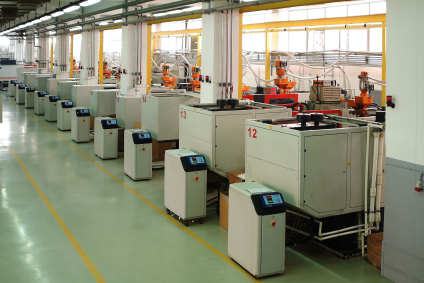Metallization has become an industry standard. Its purposes are not only mechanical but for aesthetic reasons as well. The process of metallization is used to coat an object with a metal or an alloy to protect it from corrosion and wear and tear. It’s also used to create a shiny gloss and add properties that are gained through the process that it normally doesn’t possess such as electrical conductivity and abrasion resistance. Metallization isn’t a process on its own but is broken down in a variety of different methods.
Vacuum Metallization
The process of vacuum metalizing requires a metallic coating material to be placed within a vacuum chamber. The chamber then heats the material until it can be placed on the product as a very thin film. This process takes place inside a vacuum chamber for the entire duration to prevent any oxidation from occurring.
If you’re familiar with the process of sputter deposition, then you can likely relate it to the process of vacuum metallization. Similar in a way that sputter deposition is used to apply thin film on a substrate within a controlled environment; vacuum metallization utilizes the same approach.
Metal Spraying
Also known as “flame coating”, this process requires molten metal to be sprayed over the surface of a product to either help repair any damages or to provide an additional protective coating layer. This type of metallization is fairly easy to perform and is a simple process but provides a high porosity on the coating when performed.
Thermal Spraying
Thermal spraying utilizes either wire or powder materials being melted down into droplets. This process also sprays the coating onto the product but what differentiates this from flame coating is that droplets are produced out of the reaction, which bond to the surface of the selected substrate. This type of metallization also has different processes which include: electric arc spray, plasma spray, combustion flame spray, and high velocity oxy-fuel. Similar to metal spraying, this also provides a high porosity on the surface of the product.
Electroless Plating
Electroless plating has been known to be a more effective solution to metallization than by vacuum. This is because of its higher adhesion upon completion of the coating. Electroless plating deposits copper or nickel metal onto plastic substrates. The process begins by ridding the plastic surface of the product through oxidation methods. Because the oxidizing solution increases the rate of hydrogen bonding, a higher rate of adhesion occurs when the plastic is coated with the metallic materials.
———————————————————————————————-
Denton Vacuum, LLC manufactures state-of-the-art production systems such as: optical coating systems, sputter coater systems, and high volume magnetron sputtering systems.
